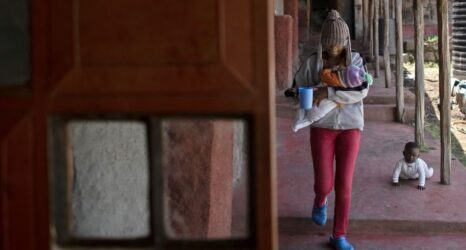I’m at the 20th International HIV/AIDS Conference in Melbourne this week. It brings together people from all around the world to join hands in continuing and expanding the fight against HIV/AIDS.
For me, the conference has been a complete eye opener into a world I hadn’t previously known much about. I was born in 1996, the year antiretroviral medication began saving so many lives. But today’s media coverage most often shows the science behind the disease and the race for a cure rather than the cultural impact of the disease, making it hard for my generation to understand the ways HIV/AIDS has affected communities. We relate little to those who lived through the original epidemic in the ’80s. I have no friends who died from the virus; in fact, growing up in the U.S., I know no one my age who has contracted the disease.
But that changed for me this week. I’m not as interested in the scientific aspects of HIV/AIDS. I love hanging at the Global Village, where people with AIDS, activists, friends and allies offer speeches, theatrical pieces, debates, sing-alongs, dances, documentaries and dramatic displays throughout the conference. It takes learning about the disease to a whole new interactive level.
The moment I stepped through the doors of the brightly lit Global Village, I was greeted with genuine excitement. Within a minute, I was nearly trampled by a group of middle-aged “ladies” in drag, wearing dangerously high red heels, their smiles shimmering from the gold lipstick covering their lips. They stopped momentarily to bat their long fake eyelashes at the surrounding crowd and flashing cameras before strutting onward.
I passed dresses made completely of condoms lining one wall (see photo above), then headed to the Condomized! booth where I learned to stick tie-dye paper to colored condoms in order to make contraceptive pins. By the end of the day my bags would be so full of every possible kind of condom that my muscles ached from the strain.
Next I was ushered into a small corner filled with red umbrellas. Three woman stood before a small crowd of people, and in a thick Cantonese accent, the first one announced: “I am a sex worker.” The next woman, in just as thick an accent said, “My name sex worker,” and then the two laughed, receiving smiles from the entire crowd. Back home, anyone talking about sex workers calls them by their stigmatized name, prostitute, and it’s never nice. Here, these women are just women, smiling and cracking jokes, showing that they are no different than any other professional and they have the right to live free of AIDS.
The rest of my day: I learned about the female condom (it’s making a comeback!), took a trip to the “ask a whore a question booth,” attended a lubricant tasting and the Global Village opening ceremony event that involved youth speakers, joined an “Ain’t No Mountain High Enough” sing-along and watched a native Australian dance performance.
Now for me, this conference means much more than just fighting against HIV/AIDS. It creates a voice for struggling communities, an embrace of issues often overlooked and gives a power to the people. I couldn’t be happier to be among such strong-willed and empowered people who refuse to be held down by the judgments of much of the world. The conference looks at the needs of the people, turning an epidemic into a theatrical party and creating energy to carry on the fight—especially within my generation.
Photo courtesy of the author.





